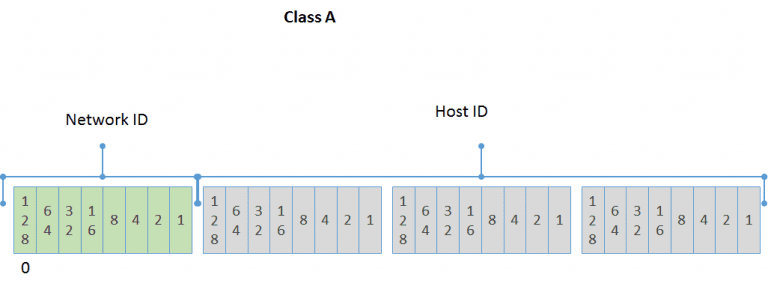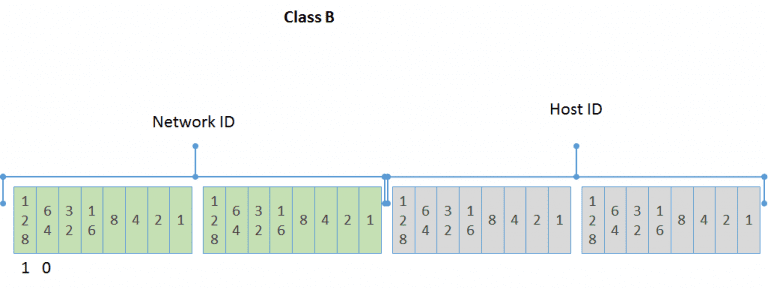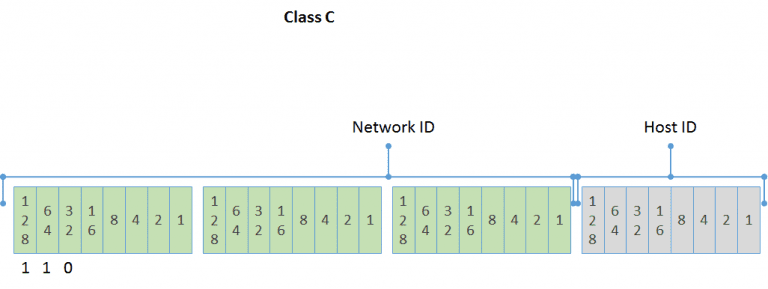Part 2 of 5:Introduction to Networking – IP Addressing
- Megan
- Latest News
- 0 likes
- 1875 views
- 0 comments
In our previous blog post, Part 1 of 5: Introduction to Networking, we touched base on the physical components that make up a network as well as the basic of the 7 layers of the OSI model. One of the most important topics in networking in TCP/IP is IP addressing. With regards to IP terminology, we will be referring to the following:
- Bit – a bit is a one-digit either represented as a 0 or a 1
- Byte – a byte is made up of 8 bits
- Network Address: a Network Address is an identifier for a node or network interface of a telecommunications network.
- Broadcast Address: a broadcast address is a logical address at which all devices connected to a multiple access communications network are enabled to receive datagrams.
As previously mentioned, each device connected to a network should have a specific address.
Let’s have a look at the breakdown of an IP Address.
An IP address consists of 32 bits of information divided into 4 sections, each consisting of 8 bits
Network Addressing
The network address uniquely identifies each network. Each device connected to this network will have the same range of IP address. For example, when trying to connect to a device with a default IP address of 192.1668.0.1 means that the network address is defined as 192.168.0 and your management PC, to gain access to the Web GUI, should be in the same range as 192.168.0.
The different types of addresses:
Class A
Class A addresses are assigned to networks with a very large number of hots. The high-order bit in a Class A address is always set to 0. The next seven bits (completing the first octet) complete the network ID. The remaining 24 bits (the last 3 octets) represent the host ID. This allows for 126 networks and 16777214 hosts per network.

Class B
Class B addresses as assigned from medium-sized to large-sized networks. The two high-order bits in a Class B address are always set to binary 1 0. The next 14 bits (completing the first two octets) complete the network ID. The remaining 16 bits (two last octets) represent the host ID. This allows for 16384 networks and 65534 hosts per network.

Class C
Class C addresses are used for small networks. The three high-order bits in Class C addresses are always set to binary 1 1 0. The next 21 bits completing the first three octets, complete the network ID. The remaining 8 bits, or the last octet, represent the host ID. This allows for 2097152 networks and 254 hosts per network.

Guidelines for assigning a Network ID:
- The Network ID identifies the TCP/IP hosts that are located on the same physical network. All hosts on the same network must be assigned the same network ID to communicate with each other
- The network ID must be unique to the IP internetwork. If you plan on having a direct routed connection to the public internet the network ID must be unique to the internet. If you do not plan on connecting to the public internet, the local network ID must be unique to your private internetwork.
- The Network ID cannot begin with the number 127. The number 127 in a Class A address is reserved for internal loopback functions.
- All bits within the network ID cannot be set to All 1’s in the Network ID are reserved for an IP Broadcast address.
- All bits within the network ID cannot be set to All 0’s in the network ID are used to denote a specific host on the local network and are not routed.
Guidelines for assigning Host ID:
- The Host ID identifies a TCP/IP host within a network. The combination of IP Network ID and IP Host ID is an IP address.
- The Host ID must be unique to the Network ID.
- All bits within the Host ID cannot be set to 1 because this Host ID is reserved as a Broadcast address to send a packet to all hosts on a network.
- All bits in the Host ID cannot be set to 0 because this Host ID is reserved to denote the ID Network ID.
Referenced from: https://technet.microsoft.com/en-us/library/cc940018.aspx
To summarize: The network ID is the IP address range of the network and if you follow the guidelines as set out above, you can successfully map or address the hosts or devise connecting to that same Network ID or range. When assigning Host ID’s, ensure that the .0 and .255 addresses are not used for a specific host or device as this is used for Broadcast and Network ID.
In our next blog, we will cover the basics of Subnetting – as this ties into IP Addressing for hosts and for Network ID’s.



Comments
View Comments